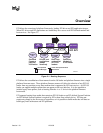
Introduction
Version 1.10 12/01/02 1-11
1.6.2 Legacy Option ROM Issues
This idea of supporting a driver model came from feedback on the EFI Specification that provided a
clear, market-driven requirement for an alternative to the legacy option ROM (sometimes also
referred to as an expansion ROM). The perception is that the advent of the EFI Specification
represents a chance to escape the limitations implicit to the construction and operation of legacy
option ROM images by replacing them with an alternative mechanism that works within the
framework of the EFI Specification.
1.7 Migration Requirements
Migration requirements cover the transition period from initial implementation of this specification
to a future time when all platforms and operating systems implement to this specification. During
this period, two major compatibility considerations are important:
1. The ability to continue booting legacy operating systems;
and
2. The ability to implement EFI on existing platforms by reusing as much existing firmware code
to keep development resource and time requirements to a minimum.
1.7.1 Legacy Operating System Support
The EFI specification represents the preferred means for a shrink-wrap OS and firmware to
communicate during the Intel architecture platform boot process. However, choosing to make a
platform that complies with this specification in no way precludes a platform from also supporting
existing legacy OS binaries that have no knowledge of the EFI specification.
The EFI specification does not restrict a platform designer who chooses to support both the EFI
specification and a more traditional “PC-AT” boot infrastructure. If such a legacy infrastructure is
to be implemented it should be developed in accordance with existing industry practice that is
defined outside the scope of this specification. The choice of legacy operating systems that are
supported on any given platform is left to the manufacturer of that platform.
1.7.2 Supporting the EFI Specification on a Legacy Platform
The EFI specification has been carefully designed to allow for existing systems to be extended to
support it with a minimum of development effort. In particular, the abstract structures and services
defined in the EFI specification can all be supported on legacy platforms.
For example, to accomplish such support on an existing IA-32 platform that uses traditional BIOS
to support operating system boot, an additional layer of firmware code would need to be provided.
This extra code would be required to translate existing interfaces for services and devices into
support for the abstractions defined in this specification.


















